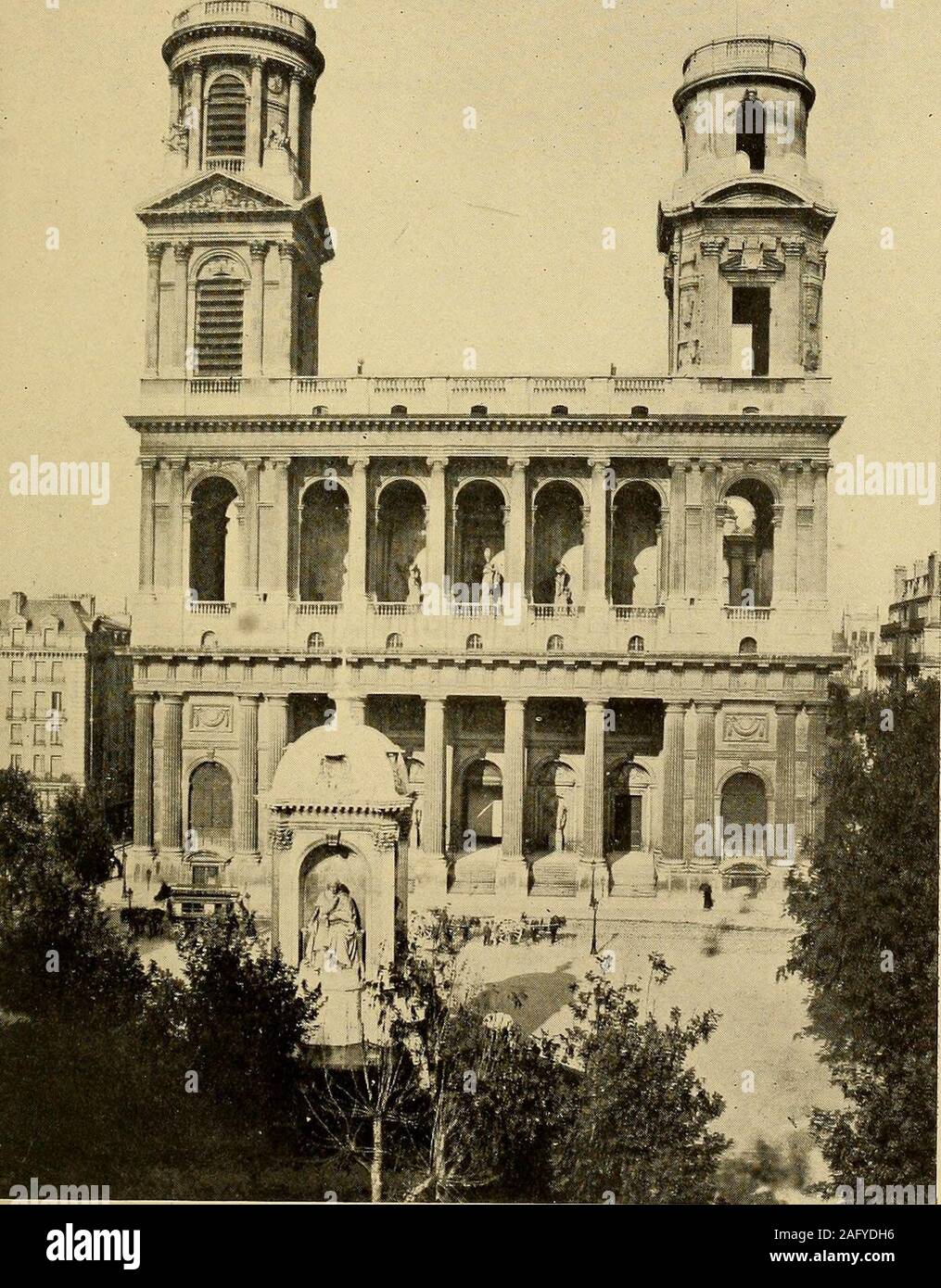. Paris as seen and described by famous writers ... c; and each row, as I am told, isnearly forty French feet in height, exclusively of their en-tablatures, each of ten feet. We have nothing like this,certainly, as the front of a parish church, in London.When I except Saint Pauls, such exception is made inreference to the most majestic piece of architectural com-position which, to my eye, the wit of man hath yet everdevised. The architect of the magnificent front of Saint-Sulpice was Servandoni; and a street hard by (in whichDom Brial, the father of French history resides) takes itsname from t

Image details
Contributor:
The Reading Room / Alamy Stock PhotoImage ID:
2AFYDH6File size:
7.1 MB (646.7 KB Compressed download)Releases:
Model - no | Property - noDo I need a release?Dimensions:
1397 x 1788 px | 23.7 x 30.3 cm | 9.3 x 11.9 inches | 150dpiMore information:
This image is a public domain image, which means either that copyright has expired in the image or the copyright holder has waived their copyright. Alamy charges you a fee for access to the high resolution copy of the image.
This image could have imperfections as it’s either historical or reportage.
. Paris as seen and described by famous writers ... c; and each row, as I am told, isnearly forty French feet in height, exclusively of their en-tablatures, each of ten feet. We have nothing like this, certainly, as the front of a parish church, in London.When I except Saint Pauls, such exception is made inreference to the most majestic piece of architectural com-position which, to my eye, the wit of man hath yet everdevised. The architect of the magnificent front of Saint-Sulpice was Servandoni; and a street hard by (in whichDom Brial, the father of French history resides) takes itsname from the architect. There are two towers—one ateach end of this front, about two hundred and twenty feetin height from the pavement; harmonizing well with thegeneral style of architecture, but of which that to the south(to the best of my recollection) is left in an unaccountablyif not shamefully unfinished state. These towers are saidto be about one toise higher than those of Notre-Dame. The interior of this church is hardly less imposing than its 182. SAINT-SULPICE. SAINT-SULPICE 183 exterior. The vaulted roofs are exceedingly lofty; but, for the length of the nave, and more especially the choir, the transepts are disproportionally short, nor are there suf-ficiently prominent ornaments to give relief to the massiveappearance of the sides. These sides are decorated byfluted pilasters of the Corinthian order, which for so largeand lofty a building have a tame effect. There is nothinglike the huge, single, insulated column, or the clusteredslim pilasters, that separate the nave from the side aisles ofthe Gothic churches of the early and middle ages. The principal altar between the nave and the choir isadmired for its size and grandeur of effect, but it is cer-tainly ill-placed j it is perhaps too ornamental, looking likea detached piece which does not harmonize with the sur-rounding objects. Indeed, most of the altars in Frenchchurches want simplicity and appropriate effect, and thewho